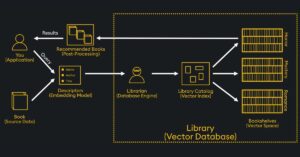Vector Database and AI: How they drive Recommendation Systems and NLP
Vector Database: The rapid advancement of technology has transformed the way data is stored, managed, and retrieved. Traditional data storage and retrieval systems, such as relational databases, were originally designed to handle structured, tabular data. Over the years, these systems have evolved to accommodate a variety of formats, including semi-structured and unstructured data. However, the emergence of machine learning (ML) and artificial intelligence (AI) has brought forth a new challenge: managing high-dimensional data.
High-dimensional data, often represented as vectors, is ubiquitous in modern AI applications. For instance, images are represented as feature vectors extracted from convolutional neural networks, text is encoded into embeddings using transformer-based models, and user behavior patterns are stored as vectors in recommendation systems. Traditional databases struggle to efficiently store and query this type of data, especially when scalability and low-latency performance are critical.
The demand for efficient handling of high-dimensional data has led to the development of specialized systems known as vector databases. These databases are optimized to store, index, and retrieve vectorized data, making them a cornerstone of modern AI and ML pipelines. They enable capabilities such as semantic search, personalized recommendations, and real-time anomaly detection, driving innovation across multiple industries.
